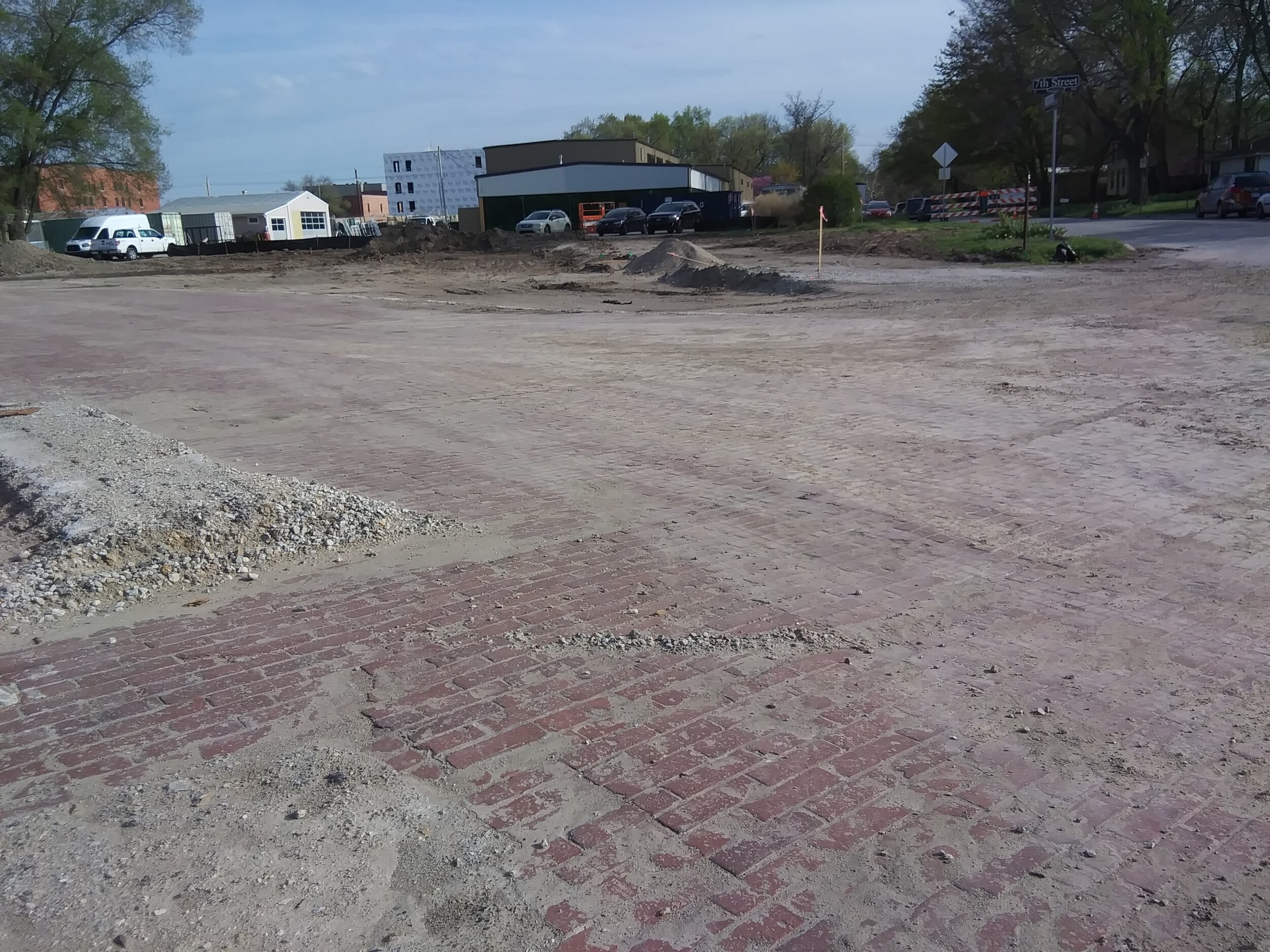Amtrak/Santa Fe Depot Parking Lot
/Nearly aS LONG AS A football field, the rediscovered floor and platform of the former Santa Fe freight house will be restored as part of the Amtrak depot’s new parking lot.
Sometimes a truly amazing discovery can sprout from mundane beginnings. Back in March, a contractor hired by the city began work on a routine parking improvement project just east of the historic midcentury-modern Amtrak/Santa Fe Depot at 413 E. 7th Street. Farmer’s Excavating was scraping away layers of dirt and gravel that had been there for years when they uncovered something that was certainly curious: an intact layer of red brick underlying almost the entire surface. Rather than continuing with the excavation and adding the brick to the debris pile, the contractor stopped work and alerted city engineer David Cronin.
Was it an abandoned brick street? The bricks were mortared together, which would not have occurred in typical brick street construction. Diving into research on the newly discovered brick, Cronin contacted Historic Resources Administrator Lynne Braddock Zollner; Stan Hernly, the project architect for the depot rehabilitation project that had been completed in 2019; members of the volunteer group Depot Redux, which had worked for years to save the modern station; and nearby East Lawrence neighbors, some of whom had lived in the area for many years.
The answer provided a link to the property’s historic past. The brick surface — nearly the length of a football field — was the floor and loading platform of the old freight depot that stood next to the original two-story depot until that structure was demolished after the great flood of 1951. Today’s modern version of the depot was built in 1956, and it is believed that the freight building survived into the 1960s.
Once the historic material had been identified, the city’s attention focused on whether it could be incorporated into the plan for the new lot. It was determined that the brick surface had a good base and an acceptable slope for drainage. Keeping the brick as usable surface on the lot’s north side could accommodate 17 parking spaces next to the east end of the depot, and the brickwork could be incorporated as a key element of the larger parking lot project.
The plan for the new parking lot shows how the old brickwork will be incorporated, including the slash across it that used to be tracks leading to an adjacent railroad siding.
As he worked through the preservation of the brick, Cronin moderated an email chat with more than a dozen community stakeholders to discuss various aspects of the project. Several details were thoughtfully worked out by this ad hoc group. One of particular interest was the appearance of a 10-foot-wide slash that ran diagonally through the brick field. It was determined that there had been a rail spur there to a warehouse just south of the site, but the rails had been removed at some point. The group analyzed three different options to preserve this facet of the site’s history before deciding on a concrete outline inlaid with brick, running counter to the direction of the brick in the rest of the lot.
Work has begun again, and what would have been a typical parking lot will now help current and future generations understand East Lawrence’s rich railroad history through a long-hidden physical connection to its past. City staff and the contractor followed a preservation best practice when a surprising and possibly significant historical element was uncovered: Work was stopped, experts and neighbors were engaged to discuss and resolve the issues presented, and plans were modified to allow the historic material to exist within the new project. LPA cannot applaud this preservation effort loudly enough.

